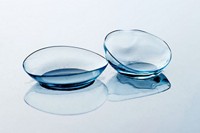Advertisement
Grab your lab coat. Let's get started
Welcome!
Welcome!
Create an account below to get 6 C&EN articles per month, receive newsletters and more - all free.
It seems this is your first time logging in online. Please enter the following information to continue.
As an ACS member you automatically get access to this site. All we need is few more details to create your reading experience.
Not you? Sign in with a different account.
Not you? Sign in with a different account.
ERROR 1
ERROR 1
ERROR 2
ERROR 2
ERROR 2
ERROR 2
ERROR 2
Password and Confirm password must match.
If you have an ACS member number, please enter it here so we can link this account to your membership. (optional)
ERROR 2
ACS values your privacy. By submitting your information, you are gaining access to C&EN and subscribing to our weekly newsletter. We use the information you provide to make your reading experience better, and we will never sell your data to third party members.
Pollution
Long dry periods may trigger microplastic formation in seasonal rivers
Scientists are only now starting to understand whether plastics degrade more when riverbeds run dry
by Payal Dhar, special to C&EN
July 29, 2024

Scientists remain unsure about how droughts in rivers affect plastic pollution. A new study suggests that the drying up of riverbeds could increase plastic weathering caused by the sun’s ultraviolet radiation, resulting in increased microplastic formation (Environ. Sci. Technol. 2024, DOI: 10.1021/acs.est.4c00528).
Intermittent rivers and ephemeral streams (IRES)—waterways that dry out periodically across seasons or years—exist in every continent and climate type across the world. In the past 5 decades, many perennial rivers and streams have become intermittent because of climate change, changes in land use patterns, and natural causes. Yet researchers have not studied the intermittent ecosystems to the same extent as their perennial counterparts.
During dry events, the water column no longer shields the plastic waste in IRES from direct sunlight, so the materials become weakened, says Nans Barthélémy, a PhD student at the French National Center for Scientific Research and the paper’s lead author. When the water flow returns after a dry period, a process known as rewetting, fluid pulses carrying sediments and organic matter exert mechanical forces on the already-embrittled plastics, causing them to fragment into microplastics. Therefore, the researchers say, IRES that remain dry for long periods could be hot spots of plastic fragmentation.
In laboratory experiments, the researchers exposed polyvinyl chloride (PVC) disks to varying dry durations over 6 days—from 0 (no dry days) to 6 (all dry). The PVC was exposed to UV radiation simultaneously. After the simulated drying event, the plastic was combined with water and sediments, and the combination was rigorously mixed to re-create the harsh rewetting events in IRES. The researchers then measured the mass loss in the PVC disks as well as the size and abundance of microplastics.
The plastic exposed to up to 4 days of dry conditions showed no differences in fragmentation after the simulated rewetting process. But when the dry duration exceeded the 4-day threshold, fragmentation increased.
To have a point of comparison, the researchers also performed the experiment in a river catchment—an area that collects rainwater that drains into a lake, river, or reservoir—during a dry period. “Every week, I took some subsamples and put them through the fragmentation process,” Barthélémy says. The researchers found that 12 weeks of direct sunlight exposure produced similar abundances and sizes of microplastic as obtained after 6 full days of laboratory experiments using a UVC lamp.
Using the data from their experiments and information from a model of the Albarine River catchment in eastern France, the authors created a preliminary tool called the Intermittence-Based Plastic Fragmentation Index to predict plastic fragmentation and identify microplastic generation hot spots.
While the study exposes a critical knowledge gap in understanding dry events’ impact on microplastic formation in IRES ecosystems, the authors caution that these are preliminary observations. The study takes into account only one type of degradation (UV radiation) and one kind of plastic.
“We are not sure yet if the fragmentation will be [greater] in intermittent rivers or perennial rivers,” Barthélémy says. In the latter, the uninterrupted water supply may filter some of the UV radiation, but continuous mechanical and biochemical forces are at play. On the other hand, plastics in IRES experience more weathering from sun exposure.
Amelia Tan Suet May, a marine biotechnologist at Chang Gung University, says these findings are novel. She says they are important in the context of climate change leading to more droughts and, therefore, the possibility of increasing amounts of microplastic in bodies of water. She also adds that field validation of these findings is essential, as well as further research into plastic breakdown in IRES environments.




Join the conversation
Contact the reporter
Submit a Letter to the Editor for publication
Engage with us on Twitter